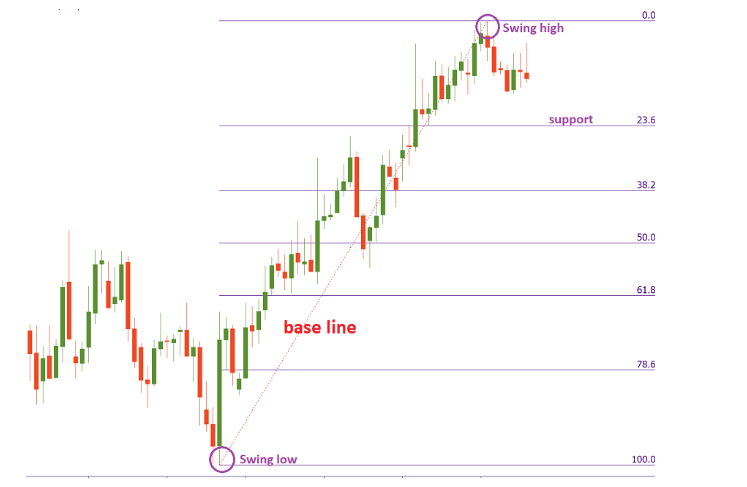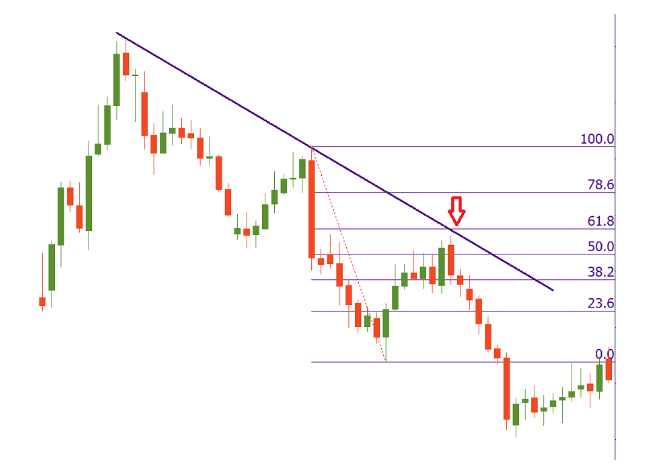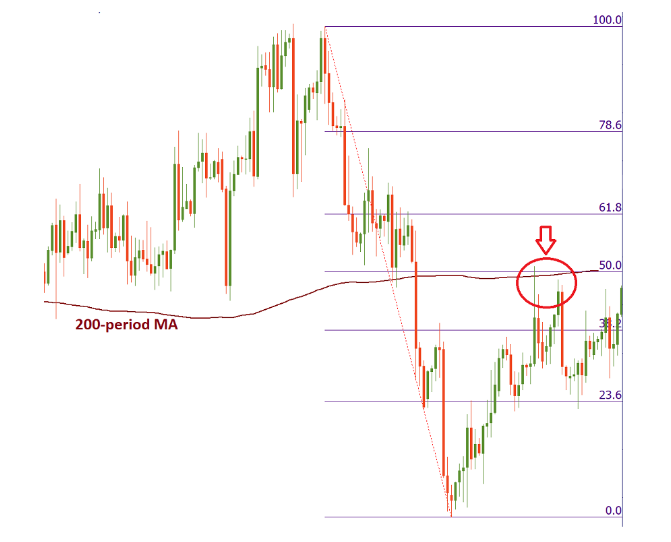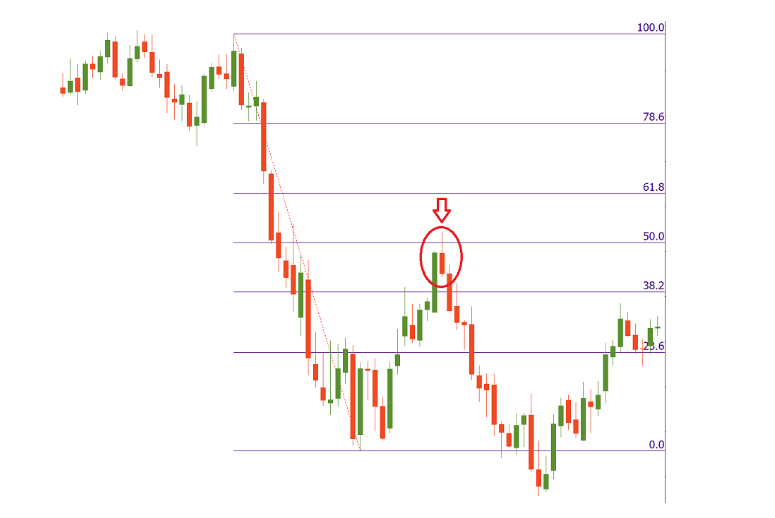The main purpose for using Fibo retracement levels is to determine the size of potential correction against the main trend.
To apply Fibo retracement to a chart, you need to do the following:
1. Select the ‘Fibonacci retracement’ tool.
2. Identify a distinct high and low of the price chart. Make sure that there’s no higher high or lower low to the right of those high and low you have chosen.
3. Draw a trend line (the so-called “base line”) connecting the extreme points you have picked. For an uptrend, you’ll draw this line from minimum to maximum. For the downtrend, you’ll need to draw a line from maximum to minimum. Always draw the line from the left to the right, from the lowest point of one candlestick to the highest point of another and vice versa (i.e. candlesticks’ wicks count).
Then 6 horizontal lines will automatically appear intersecting the trend line at Fibonacci levels of 0.0%, 23.6%, 38.2%, 50%, 61.8%, 100% (Fibonacci ratios as described above). Additional horizontal lines will be drawn at 161.8%, 261.8%, and 423.6%.
Notice that you can add other levels, for example, 78.6% in the settings of the tool.

The resulting Fibonacci levels act as support and resistance: prices tend to consolidate near these levels before the correction either ends (and the overall trend resumes) or continues (the price breaks one of the retracement levels and moves to the next one, for example, to 50% after the 38.2% level). If the price retraces more than 61.8% of the previous move (on a closing basis), the odds are that it will reach the beginning of the trend. The 50% retracement level is the most widely monitored retracement level and is a common area to buy during a retracement of an uptrend or sell if it’s a retracement of a downtrend.

How to trade using Fibonacci retracement
There are 2 ways to trade using Fibo retracement tool:
1. Aggressive
To trade at every Fibo level. If the market started actively correcting, one opens positions against the trend targeting the next Fibo level.
2. Conservative
Wait for the prices to recoil from the Fibo level in the direction of the main trend.
The price doesn’t always stop exactly at the Fibo level. In most cases, Fibo points at the area of support/resistance. As a result, before you open a trade in the point C, wait for a confirmation that the price has indeed resumed the primary trend.
You may use Fibonacci on different timeframes. If Fibo levels on different timeframes converge, these levels become more important.
Fibonacci retracement with other tools
You need to understand that Fibonacci levels are designed to give you a clue about the most profitable entry/exit points, but they don’t guarantee a positive outcome. In order to increase your chances for a successful trade, use Fibonacci retracement tool together with other technical indicators to achieve a higher probability of success.
First of all, consider using Fibos with trendlines. Draw a trendline and then plot Fibo retracement. At the point of intersection of these two tools, you might find the most favorable entry point.

If 200-period moving average coincides with 50% Fibonacci retracement, this level will likely be able to hold the initial attack on the market. This is a good place for taking profit or entering the market in the direction of the main trend.

You can also combine the Fibo retracement tool with candlestick patterns. Any reversal candlestick pattern next to a Fibonacci level will likely mean that the price action is going to take a new direction.

Finally, Fibonacci retracement can provide you not only with correction levels, but also with some targets. If the price retraces 100% of the previous trend and breaks 100% level, you can use 161.8% Fibo as the next target. The levels provided by the Fibonacci retracement tool which exceed 100% are called Fibonacci “extension” levels.



0 commentaires:
Enregistrer un commentaire